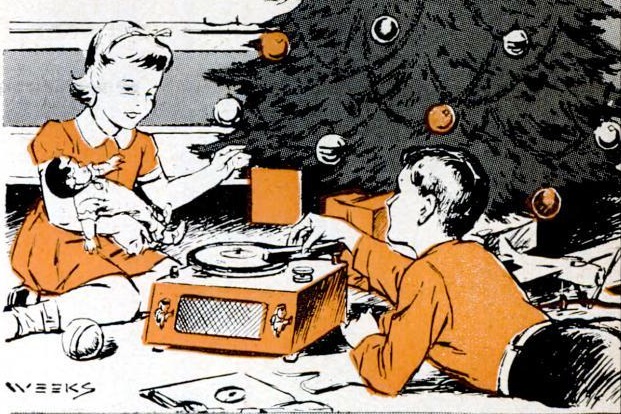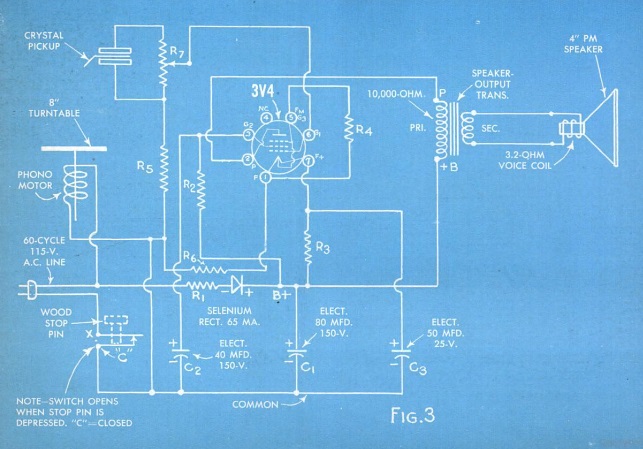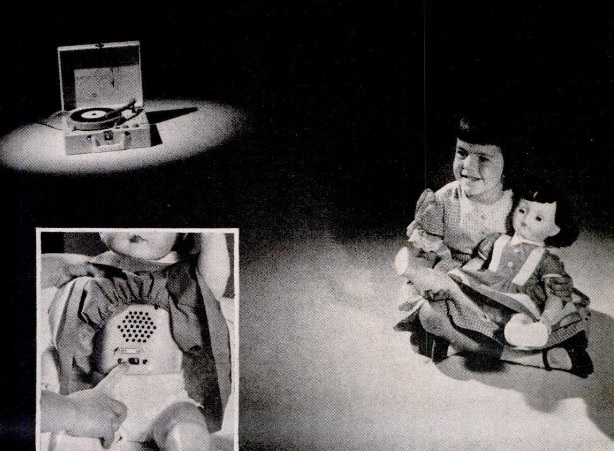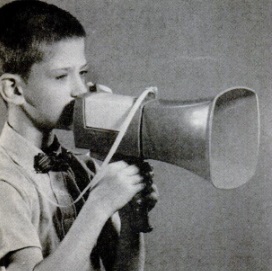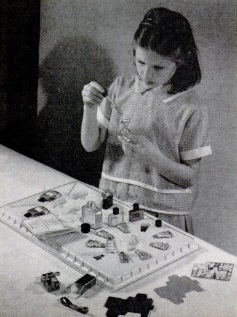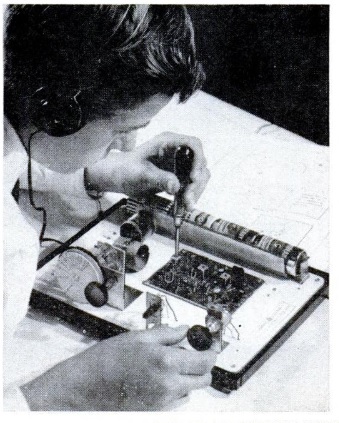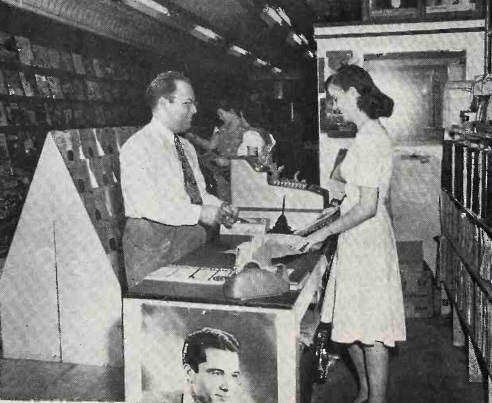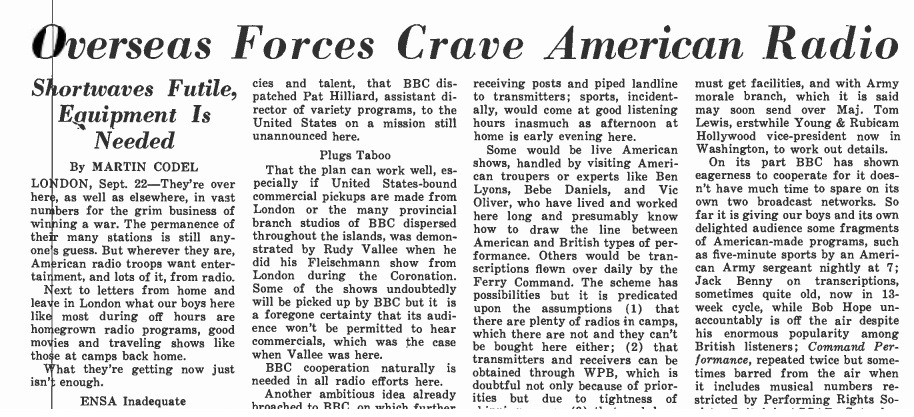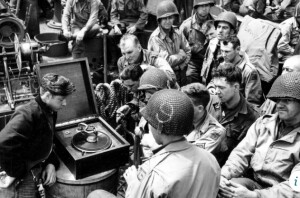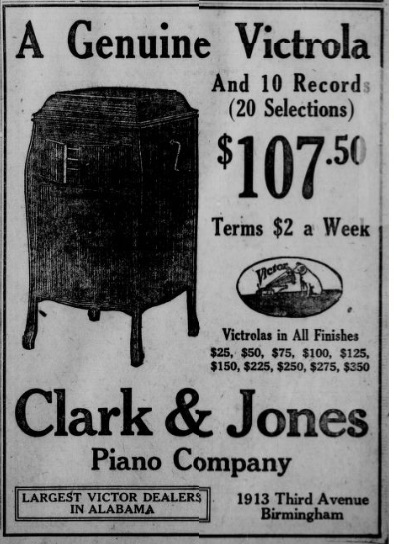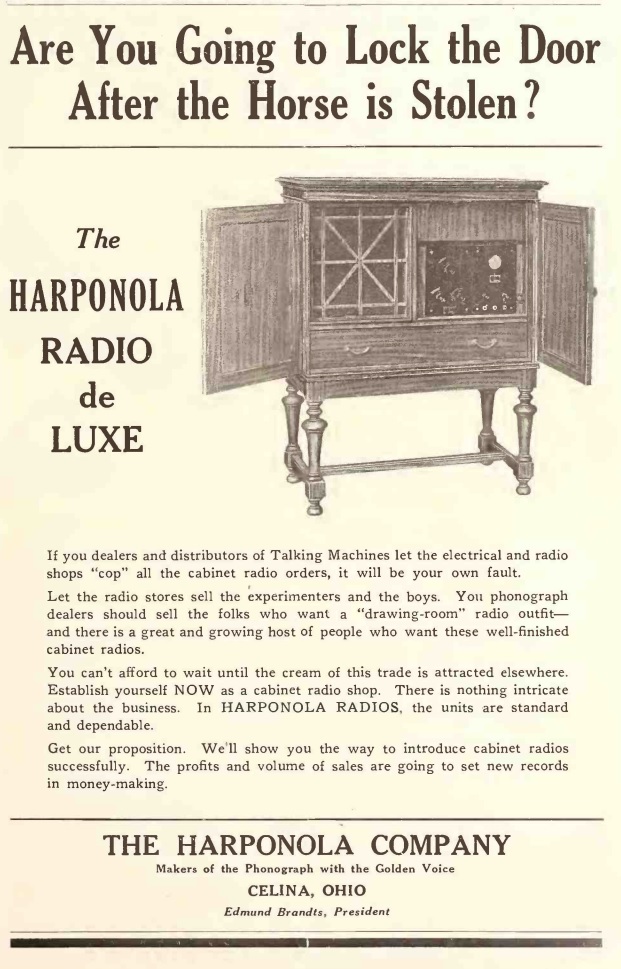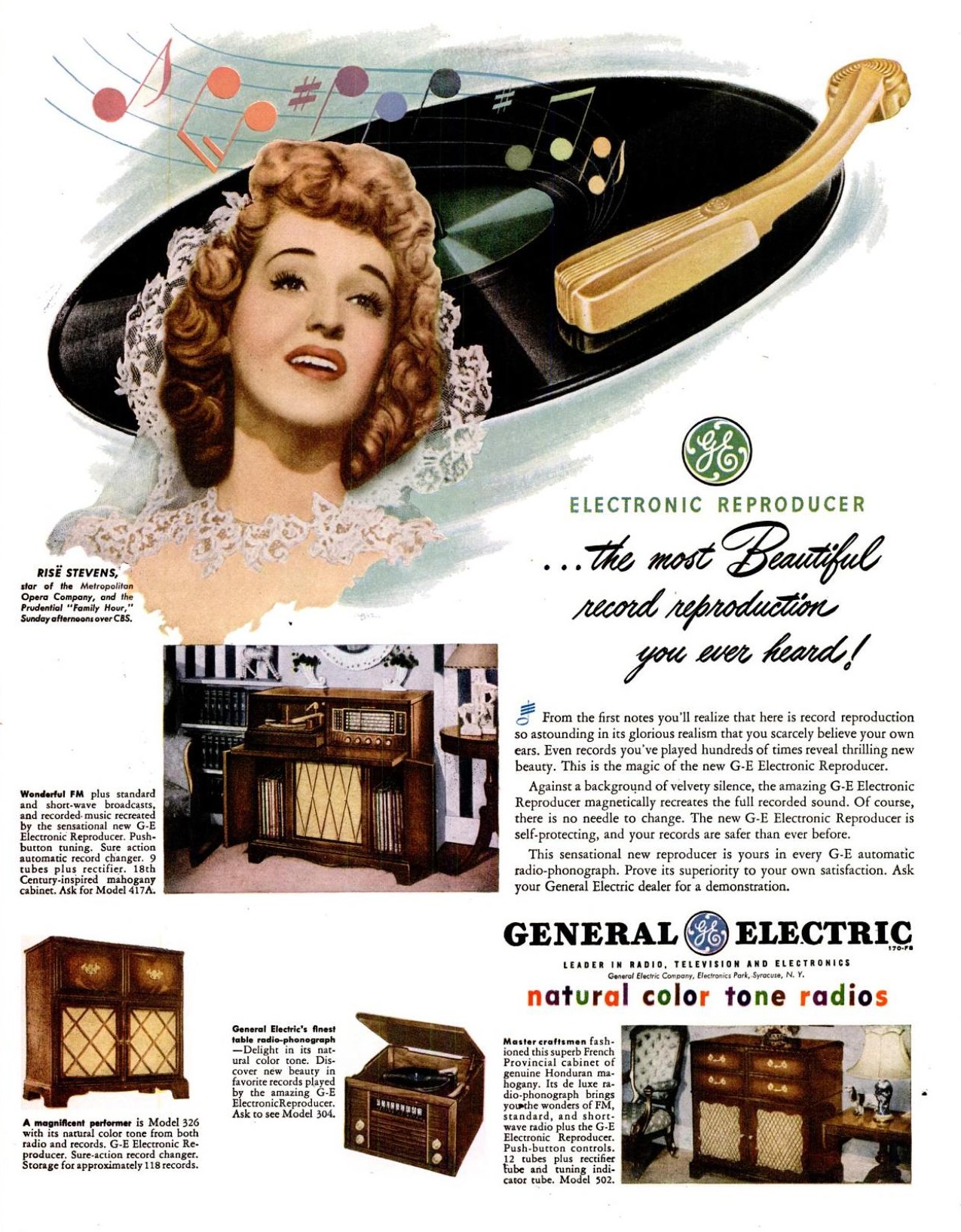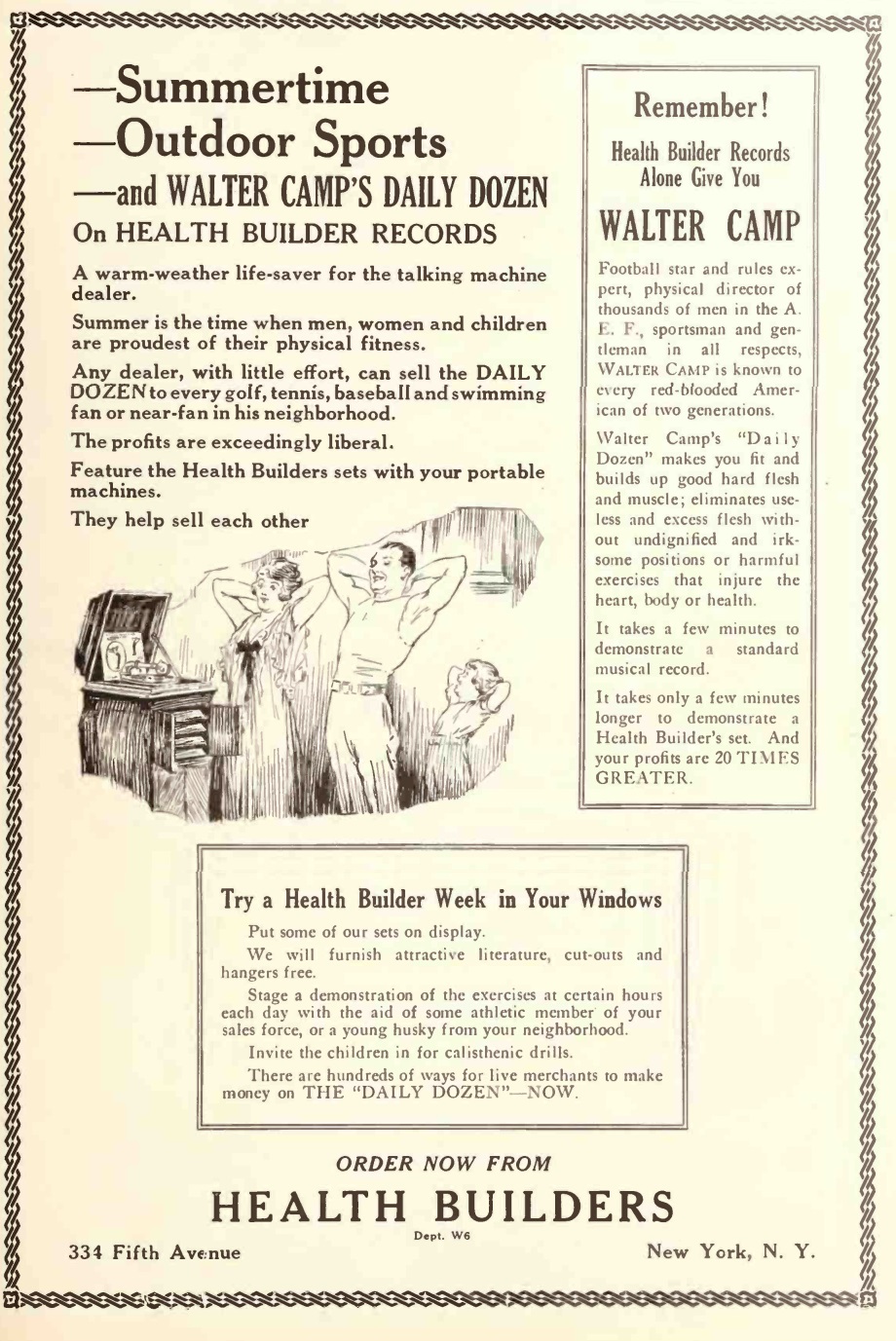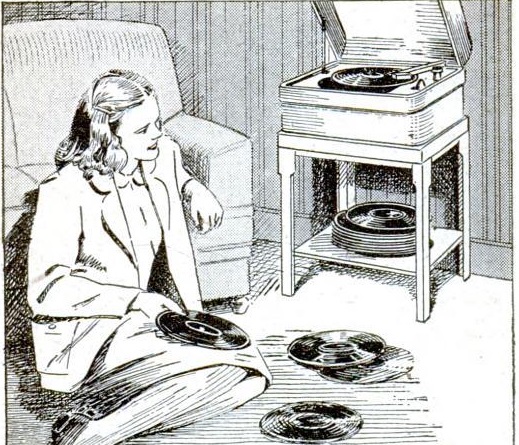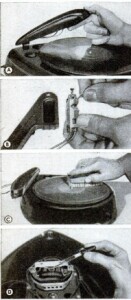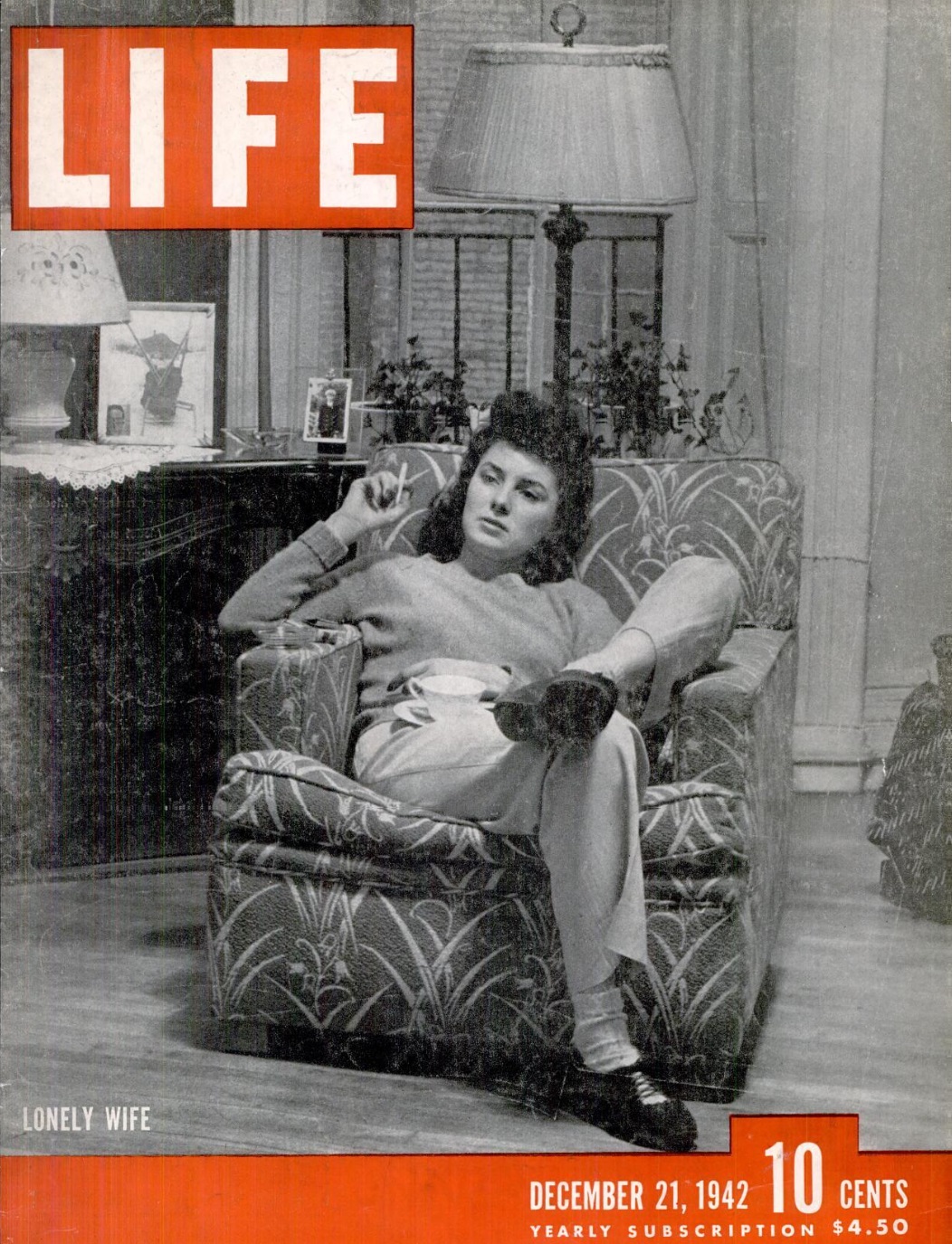 Eighty years ago today, the December 21, 1942, issue of Life Magazine featured on its cover this portrait of a lonely wife whose husband had gone to war. The cover actually depicts a model, namely actress Joan Thorsen, playing the role of the lonely wife. But the accompanying feature details the plight of a number of real ones, along with advice from author Ethel Gorham, who had written a handbook for them, So Your Husband’s Gone to War.
Eighty years ago today, the December 21, 1942, issue of Life Magazine featured on its cover this portrait of a lonely wife whose husband had gone to war. The cover actually depicts a model, namely actress Joan Thorsen, playing the role of the lonely wife. But the accompanying feature details the plight of a number of real ones, along with advice from author Ethel Gorham, who had written a handbook for them, So Your Husband’s Gone to War.
The magazine noted that no two situations were the same, but it showed the example of one lonely wife who put many of the couple’s goods in storage and moved to a smaller apartment. But author Gorman stressed the importance of keeping the overall living style similar to that enjoyed before the war, since the husband will undoubtedly be home on furlough.
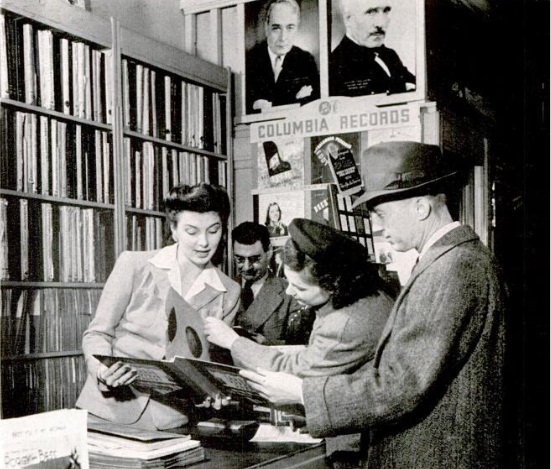 The book also provided pointers on finding a job. The woman shown in the Life article took a job in a record store, shown here. According to the magazine, work which involved meeting and talking to people was advisable for women living alone. She also had a civilian defense job answering the telephone in a New York precinct station house report center.
The book also provided pointers on finding a job. The woman shown in the Life article took a job in a record store, shown here. According to the magazine, work which involved meeting and talking to people was advisable for women living alone. She also had a civilian defense job answering the telephone in a New York precinct station house report center.


